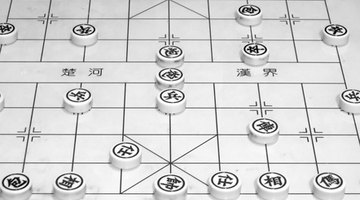To design a game board, you must pre-plan and make decisions. Creating games others enjoy or learn from requires a throughtful plan. Choose the purpose of your game, the ages of the intended players and the goal of your game. Once decisions are made, designing and creating the game is your next move. Do a little brainstorming, or thinking on paper, and reach your pre-game choices. Then start working on your very own board game.
Step 1
Study the subject material concerning the board game you plan to design. Create a list before you start your design. If possible, brainstorm with a group of people interested in your subject. Write down everything said for future consideration. Once you've finished, take a day off. Review the materials later. Add or remove items from the list.
Step 2
Design your game on a paper similar to the size or to scale of your intended game board. View the game boards of several commercial games and choose the design you want on your board. Decide if you will have "sub-paths" or short cuts along your path like you find in Candy Land. Decide how many squares or individual spaces your game needs. Put it all on the paper. Check the visual results and see if they meet your standards. Make any necessary adjustments.
Step 3
Add details to the empty spaces along the board game path. Choose obstacles and difficulties for the players to encounter. Make paths with more danger shorter in duration. Create obstacles using cards, board messages like "lose a turn" or the roll of the dice.
Step 4
Determine the method players will use to move around the game board. Choose between a spinner, cards or dice. If you choose dice, decide how many dice will be used.
Step 5
Make or choose markers for your game. Try to keep the atmosphere of the game when choosing the marker. For example, different colored cars work for a travel game while rockets complement a space game. Be creative and pick your the markers for your game well.
Step 6
Create the rules of engagement for your board game. Type your rules out and review them. Play the game on the paper before you create the actual copy. Fix anything that doesn't work before you move on.
Step 7
Choose your board game material. Consider the durability you need for your game. Use firm, cardboard sheets or construction paper for games with short term use. Foam board lasts considerably longer. Wooden game boards endure the longest.
Step 8
Print your path on the material with a pencil, using light lines. Darken the image with permanent markers or paint for the cardboard, construction paper or foam board. Try the markers, paint or a wood burner for the wooden game board. Test writing materials for durability; find instruments that do not rub off or break off. Add designs, words and pictures to the board area around the spaces. Keep them in line with subject material of the game.
Tip
Cards can be purchased from the craft store or made from 3 by 5 cards.
Related Articles
References
Tips
- Cards can be purchased from the craft store or made from 3 by 5 cards.
Writer Bio
Joan Collins began writing in 2008. Specializing in health, marriage, crafts and money, her articles appear on eHow. Collins earned a Bachelor of Arts in education from the University of Northern Colorado and a Master of Arts in instructional technology from American InterContinental University.











